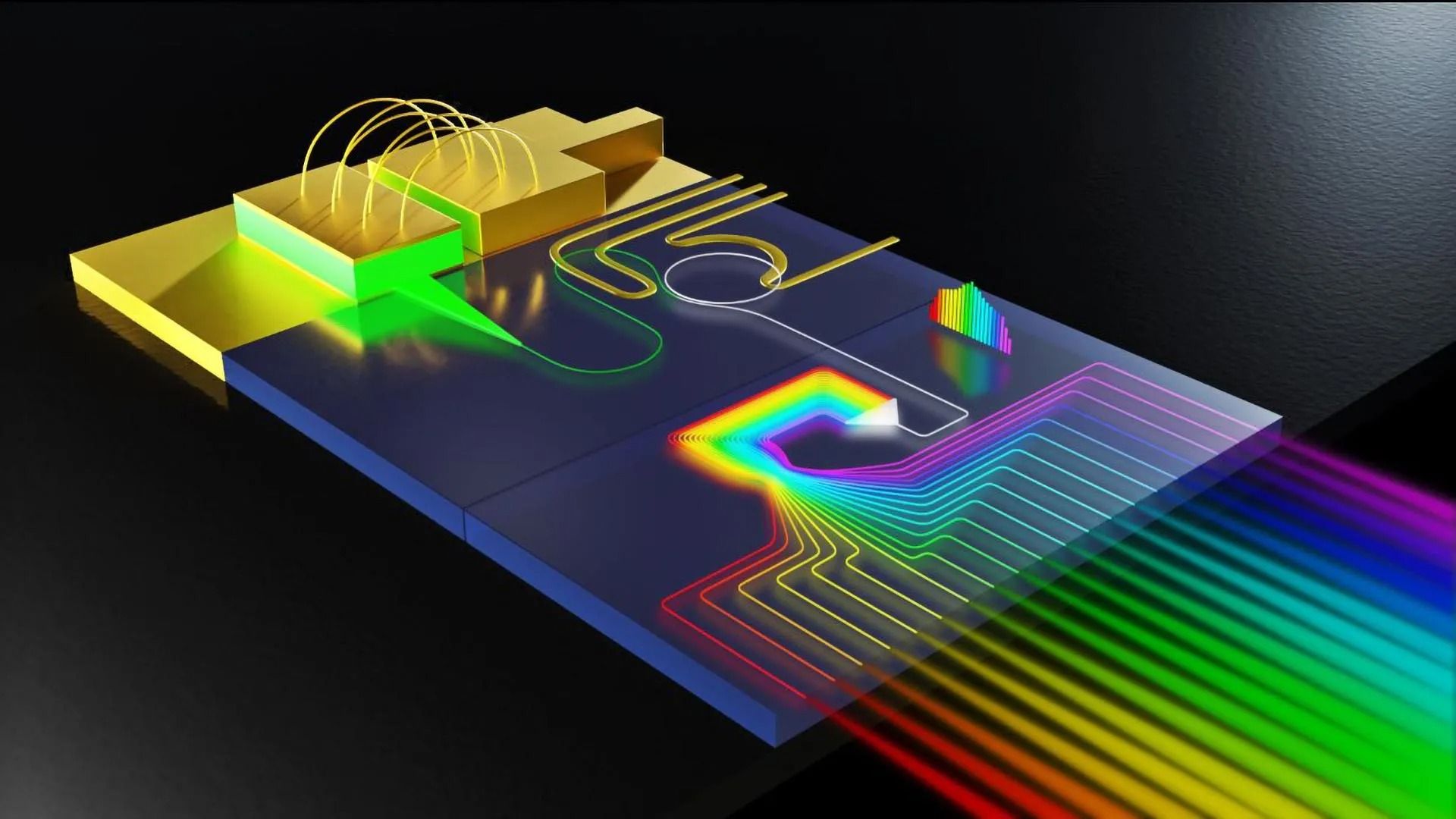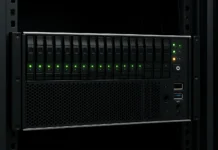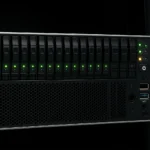
Researchers have accidentally created a compact chip that produces a powerful, multi-colored light source known as a frequency comb, a technology that could dramatically increase the speed and efficiency of data transfer. The discovery, detailed in the journal Nature Photonics, was made while the team was working on an unrelated project to improve LiDAR technology.
The research group, led by Michal Lipson at Columbia University, was designing high-power chips to produce brighter beams of light. As they increased the power sent through the chip, they noticed it was unexpectedly creating this highly structured, multi-colored light.
What is a frequency comb?
A frequency comb is a special type of light that contains many different colors, or frequencies, lined up in a precise, orderly pattern, similar to a rainbow or the teeth of a comb.
The key advantage of this structure is that each distinct color can function as its own independent data channel. This allows dozens of data streams to be sent simultaneously through the same optical fiber without interfering with each other. This principle, known as wavelength-division multiplexing (WDM), is the technology that enabled the high-speed global internet.
Currently, creating a powerful frequency comb requires large and expensive lasers and amplifiers. This new research demonstrates how to achieve the same result on a single, compact chip.
How the chip works
The breakthrough began with the team’s effort to integrate a very powerful but “messy” light source—a multimode laser diode—onto a silicon photonics chip.
- The team used a “locking mechanism” to purify the powerful but noisy light from the laser, reshaping it into a clean, stable beam.
- Once the light was purified, the chip’s own nonlinear optical properties took over, splitting that single powerful beam into dozens of evenly spaced, distinct colors.
The result is a compact, high-efficiency light source that combines the raw power of an industrial laser with the precision and stability needed for advanced communications.
Why this technology is needed now
The timing of this discovery is critical, particularly as the explosive growth of artificial intelligence strains the infrastructure inside data centers. State-of-the-art data centers already use fiber optic links, but most still rely on single-wavelength lasers, meaning they can only send one data stream at a time per fiber.
Data centers have created tremendous demand for powerful and efficient sources of light that contain many wavelengths. The technology we’ve developed takes a very powerful laser and turns it into dozens of clean, high-power channels on a chip. That means you can replace racks of individual lasers with one compact device.
said Andres Gil-Molina, a former researcher in the lab and now a principal engineer at Xscape Photonics.
By making high-power frequency combs small enough to fit directly on a chip, this technology can bring massive data-carrying capacity to the most compact parts of modern computing systems. Beyond data centers, these chips could also enable:
- Portable spectrometers
- Ultra-precise optical clocks
- Compact quantum devices
- Advanced LiDAR systems
“This is about bringing lab-grade light sources into real-world devices. If you can make them powerful, efficient, and small enough, you can put them almost anywhere.”
Gil-Molina said.



































